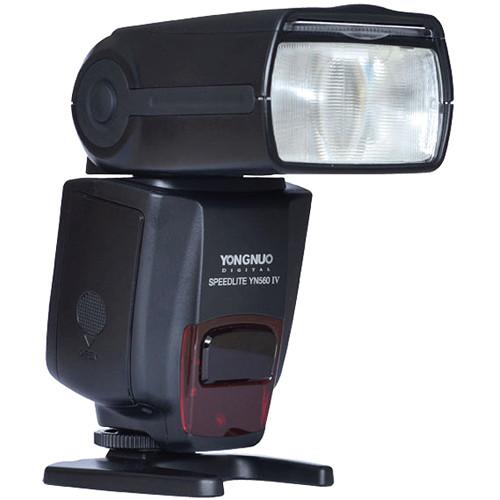



Secondly, the master flash will always give a pulse (for synchronization), and accordingly will “shoot at the forehead” of the subject being photographed. The advantages of the synchronizer in this aspect include more economical use of flashes, because in CLS and TTL modes, the flashes make preliminary impulses - control (actually for transmitting parameters to the slave flashes) and TTL to measure the required power - this consumes battery power, as well as the lamp life. in the Nikon CLS system, you control all the settings from the camera. for example, to change the power, you have to go to it and change the power in the flash settings.
REVISION DE YONGNUO YN 560 III EN ESPANOL MANUAL
(In the second version, this drawback is eliminated).įirst, the remote flash on the synchronizer will work only in manual mode, i.e. In general, I am satisfied with the devices, I do not like the absence of a retaining ring on the shoe. There are sometimes gaps in impulses, I didn't count them exactly, but approximately - no more than 10 gaps per 1000 frames.Ībout speed: for a DSLR maximum 1/200, but what’s interesting, the old Panasonic_FZ50 works quietly up to 1/400, only with 1/500 dimming starts. Well, of course, both versions of the synchronizer will work from each other, of course, if they are configured on the same channel.Ībout reliability: I didn't notice any false positives. Regarding compatibility: any synchronizer (both for Nikon and Canon) in the receiver mode will ignite the flashes of both brands (as the socket contacts are parallelized).Īnother little trick: the synchronizer-transmitter for Canon, being not fully inserted into the socket of the device, Nikon will work)) I even disassembled a couple (for Nikon) - the necessary contacts are not even soldered (but this can be fixed with a soldering iron, a couple of wires and a switch). Regarding the end-to-end TTL: it does not work and cannot work: I have several sets, purchased at different times in different places. In this plan Yongnuo RF-602 / N much more functional.Īnother little thing that can sometimes be annoying - the Yongnuo RF-603N power button is too close to the shoe and, with the flash installed in it, turning on the RF-603N is very difficult or impossible at all! You have to shoot the flash, turn on the synchronizer and set the flash back. Usually, simple radio synchronizers that do not have TTL sync can easily ignite an external flash using a central sync terminal, thus maintaining compatibility with a large number of cameras and flashes. For example, you cannot attach it to a Canon or Pentax camera and remotely fire the flash. Even worse, the Yongnuo RF-603N is only tied to Nikon cameras.
REVISION DE YONGNUO YN 560 III EN ESPANOL INSTALL
In this case, the selection of the synchronization channel is in the battery compartment, that is, to change / install it, you need to remove the batteries from the synchronizer. On top of that, I didn’t like the fact that you cannot test the flashes (by pressing a button) without attaching the Yongnuo RF-603N to the camera. Strange but model Yongnuo RF-602 / N worked great with shutter speed up to 1/250 sec, with the same camera and flash. Black stripes already appear on the image. If you set the flash sync speed in the camera menu to 1/320 sec., Then with the Yongnuo RF-603N you can work normally at shutter speeds up to 1/200 sec. I worked with him on camera Nikon D700 and with flash S. It is stated that the Yongnuo RF-603N supports shutter speeds up to 1/320 sec.


 0 kommentar(er)
0 kommentar(er)
